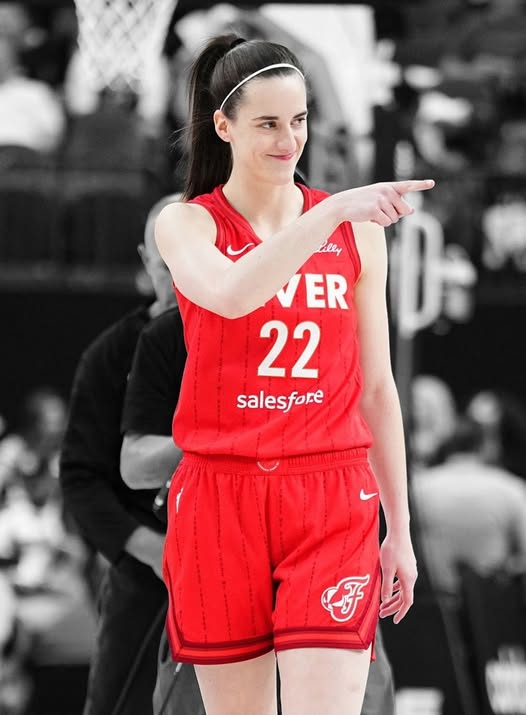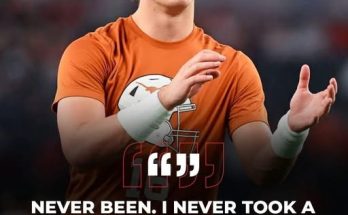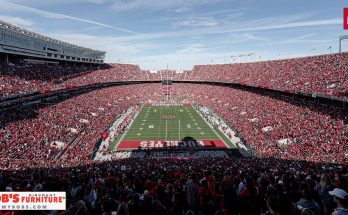When Caitlin Clark stepped onto the scene in 2024 as the No. 1 overall pick for the Indiana Fever, fans expected talent. What few anticipated was the seismic shift she would catalyze—her presence spent on the court, but her impact echoed throughout arenas, millions of living rooms, and league-wide platforms. This June, Clark shattered the WNBA All‑Star voting record for a second consecutive season, securing an unprecedented 1,293,526 fan votes, eclipsing even her own 2024 high mark. In doing so, she didn’t just set a new record; she completely revolutionized what fan engagement looks like in women’s professional basketball .
To grasp the immensity of this moment, consider these comparisons: in 2023, before Clark entered the league, the top vote‑getter was MVP star A’ja Wilson, with just 95,860 votes. Fast forward to 2025, and Clark alone amassed more votes than the combined total of the top 30 players from that earlier year—1.29 million versus 1.17 million . That’s not progression; it’s a leap—a tectonic shift in fan attention and league perception.
Beyond that raw number lies a story of exponential growth. Clark’s WNBA debut in 2024 garnered 700,735 votes—a monumental achievement at the time—and now it’s been obliterated. Her vote tally jumped by more than 84% year over year, a percentage increase that speaks less to fleeting hype and more to sustained influence . These are not numbers generated by a flash in the pan; they’re the result of a homegrown superstar with persistent dominance, magnetic charisma, and a fan base not confined to adults or die‑hard hoop heads, but spanning teenagers, families, casual viewers, and legacy sports analysts alike.
The WNBA has felt the ripple effects too. This season, average viewership swelled to 1.32 million—a threefold increase from 2023’s 462,000 —while attendance reached a two‑decades high, filling arenas to 94% capacity . Fever home games shattered expectations, bringing over 17,000 fans per night—outdrawing many NBA franchises on a per‑game basis . The “Caitlin Clark effect” has proven real time and again: local markets, national broadcasts, league revenues, and even merchandising have felt her presence.
WNBA Commissioner Cathy Engelbert has described the resurgence as a league-wide “evolution,” even referencing a historic $900 million investment that includes the addition of new franchises in Detroit, Philadelphia, and Cleveland—hallmarks of a sport ascendant, with Caitlin leading the charge . And this uptick goes beyond ballots and broadcast ratings: Major brands are circling, stadiums are selling out, and social buzz—especially on platforms like X (formerly Twitter)—has become impossible to ignore.
Take the moment when Clark received the All‑Star captain’s notification via call from Engelbert herself: it wasn’t just personal; it was historic. She wasn’t merely one among many; she led all players in votes for the second year straight . That call wasn’t just about hosting the draft; it symbolized the cultural tectonics she has induced—an athlete commanding national attention in ways previously unseen in the WNBA.
And yet, not everyone has welcomed her ascent with open arms. When the WNBA’s weighted voting system tallied her as second among guards (after Paige Bueckers), fans and commentators condemned an apparent disconnect between peer assessment and fan sentiment . Clark’s player rankings lagged behind media and fan voting—she placed ninth among guards in the player poll while media placed her third—igniting social-media outcry, celebrity commentary, and analytical breakdowns that questioned league-wide bias . Many argue that her peers are holding her back out of jealousy, or that her peer rankings reflect a desire to manage their own spotlight. ESPN analyst Robert Griffin III lamented, “Player voting for WNBA All Star voting, Caitlin Clark finished 9th among guards. Stop hating.” Dick Vitale decried it as “pure jealousy,” pointing to the ways Clark has lifted the league’s fortunes .
That polarization only amplifies Clark’s mythos: she embodies a disruptive force. Critics say the system is unfair; supporters say it’s overdue. Fans cheer louder. Stadiums get fuller. Networks sell more ads. The clamor around her outpaces any single statistic—even as she averages a stellar 18.2 points, 8.9 assists, and 5.0 rebounds per game this season . This isn’t hype; it’s sustained performance.
She’s done all this while battling injuries: a quad strain and then a groin issue sidelined her for multiple games this season . But every time she returns, she ignites the court. A 32‑point performance against the Liberty and a triple‑double on opening night are examples of brilliance even amid physical setbacks . Those flashes remind fans why they vote—she’s not just popular, she’s exhilarating.
That exhilaration spreads. A viral post on X noted Clark and Collier alone combined for more votes than the top 30 vote‑getters of 2023 . That stat floods timelines and invites storytelling: “Clark shifted perception so far that League MVPs of prior years seem like footnotes” is how a Sports Illustrated column put it . Another described the vote gains as “borderline laughable”—until you realize they point to a historic fan reawakening .
And in the middle of it all is Clark’s brand. Sneakers bearing her name—like her custom Kobe V edition—sold out in under a minute . The Fever, along with league merchandising partners, are stoking a momentum that’s visible inside and outside arenas: social media, apparel sales, advertising slots, and even long-standing investments like the Detroit, Philly, and Cleveland expansion. Those ventures track not to speculation, but to confidence in Clark’s enduring appeal .
Critics may argue that the league’s skyrocketing popularity is a bubble waiting to burst once Clark moves on. Yet there’s evidence suggesting the Wolf has awakened more than a momentary interest. Attendance in 2024 spiked 48% from the year prior, with the top 12 teams all posting healthy gains . Viewership averaged 3.44 million for the 2024 All‑Star Game, far surpassing 2003 levels . And internal league metrics show average WNBA attendance is 105% higher when Clark plays—figures rising above all prior benchmarks . Those aren’t symptoms of a passing fad—they’re signals that a new standard has been established.
So, what does Clark’s fan-vote record mean? It’s not just a personal milestone—though it is unprecedented—it’s a measure of a sport in transformation. It represents women’s basketball reclaiming cultural momentum lost since the WNBA’s early 2000s heyday. Clark is not only making history in her statline; she’s rewriting expectations for female athletes, for market dynamics, for fandom, and for investment.
The WNBA’s All‑Star Game on July 19 at Gainbridge Fieldhouse in Indianapolis—a city that’s become a stage for Clark’s mythology—will feature Clark as captain of Team East against Collier’s Team West, the first time Indiana has hosted the showcase. The draft event aired earlier, and the rosters have been announced. But the narrative is larger than jerseys or minutes. This event is as much celebration of modern sports business as it is athletic showcase. Sell‑outs happened in seven hours this spring . Fans didn’t just buy seats—they committed to the event. This isn’t fringe attention; it’s stadium-wide, coast-to-coast interest.
As her sophomore season continues, with looming Commissioner’s Cup games and playoff races, Clark’s presence as a linchpin for the Fever, the attendance surge, and the cultural conversation show no sign of slowing. On social platforms, fan reactions lean one way—adoration—but there’s another wave of discourse: peers who feel overshadowed, analysts who see opportunity, executives who hear financial upticks. League insiders are coalescing around a vision that starts with Clark and extends to growth, parity, and investment that could shape the next decade of women’s sports .
Clark herself is measured in her response to the commotion. She’s said that the fans deserve credit—they make the game special—and on home court, under national spotlight, she plans to “make it the best All‑Star the WNBA has ever had.” Her humility mixed with swagger seems emblematic of her appeal: relatable yet elite. She’s an athlete who can draw a triple‑double and sell a sneaker in 60 seconds. She can rally a city and create new storylines while honoring tradition. She’s the kind of brand that people always thought women’s sports could build, but rarely saw in action—until now.
As we count the days to July 19, remember this: Caitlin Clark’s 1.29‑million‑vote record is more than a numerical landmark. It’s the heartbeat of a sport reclaiming relevance. It’s proof of pent‑up demand, of new fan pathways, of opportunities for all players. It’s a signal artifact of a league that is bigger, bolder, and more visible than ever—because someone dared to be louder.
Caitlin Clark didn’t just break the WNBA All‑Star voting record. She exploded the ceiling. She awakened new metrics of success: attendance records, viewership spikes, merchandising sell‑through, and investment pipelines. Now, as captain in her hometown stadium, she’s not just playing a game—she’s manifesting a movement. And as it unfolds, every pass she makes, every vote she racks up, every sneaker sold tells one story: a young phenom didn’t just step into the WNBA—she carried it into a new era.


